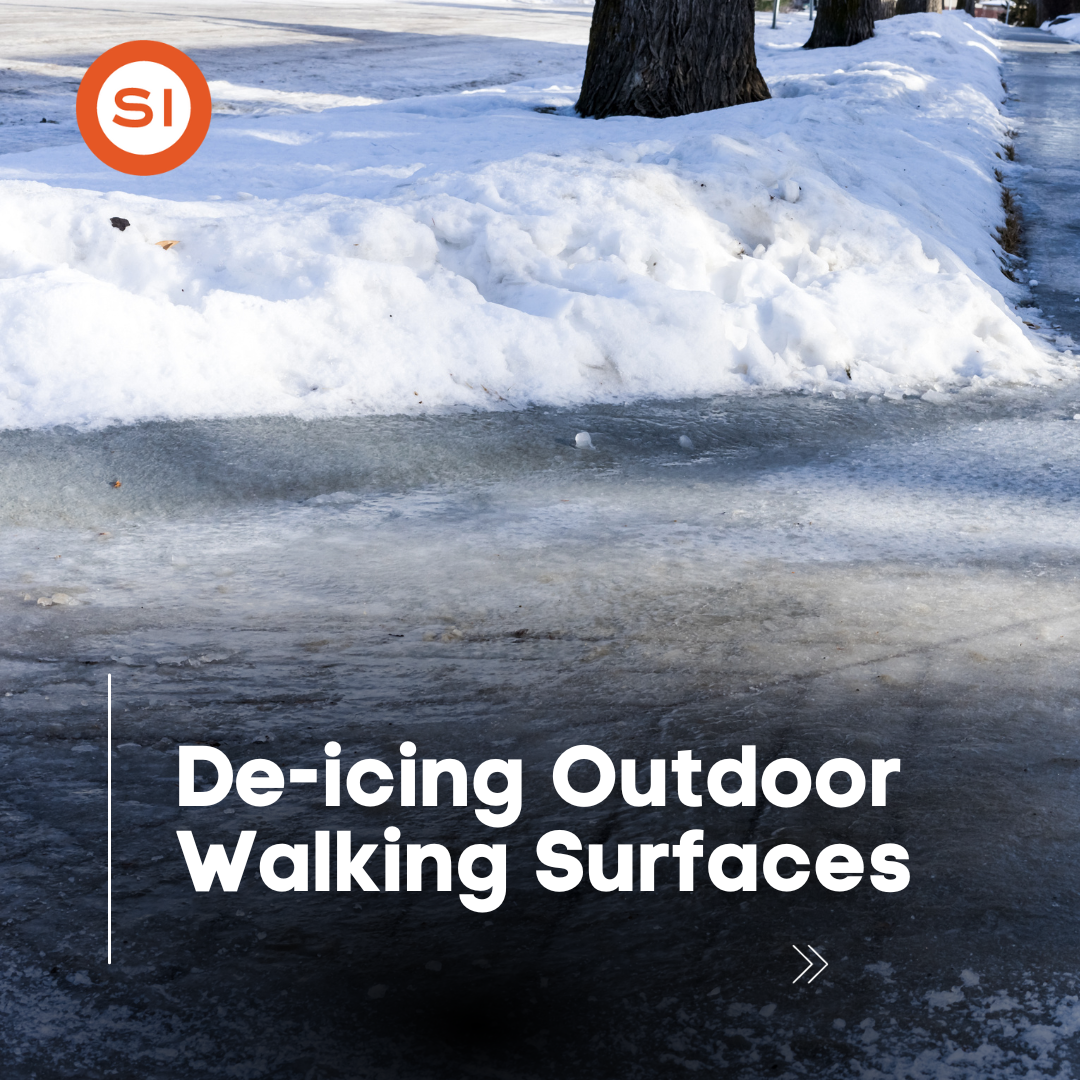Keeping outdoor walking surfaces—such as parking lots and sidewalks—clear of ice (de-icing) in the winter is crucial practice, both at the workplace and at home. Not only does ice removal offer aesthetic benefits, but it can also help keep you, your co-workers and the general public protected from the risk of slips and trips.
With this in mind, here’s how you can play your part in promoting effective and safe de-icing measures this winter.
De-icing Best Practices
Utilize the following guidance to ensure proper ice removal:
- Use the right mixture. The most effective method for de-icing an outdoor walking surface is to apply a chemical mixture throughout the area to either melt any existing ice or to prevent ice from forming altogether. This mixture typically includes rock salt (sodium chloride), magnesium chloride pellets or calcium chloride pellets. That being said, make sure to use the correct mixture for the conditions at hand.
- Rock salt is most effective in temperatures above -15 degrees Celsius.
- Calcium chloride pellets and magnesium chloride pellets are most effective in temperatures below -15 degrees Celsius.
- Regardless of which mixture you use, consider incorporating sand into your mixture before applying it to the surface. Doing so will help limit the amount of mixture you use and allow for extra traction when applied to the surface, thus minimizing the risk of slips and trips.
- Watch the weather. Keep an eye on the weather forecast to determine when you need to apply the de-icing mixture to outdoor walking surfaces. This mixture should be applied when temperatures are below freezing or if conditions such as snow, hail or sleet are possible.
- Apply the mixture correctly. Make sure you apply the de-icing mixture in thin, even layers across outdoor walking surfaces. Try to apply one layer before conditions occur, one or more layers while these conditions are taking place and a final layer after conditions have passed. Keep in mind that if there is snow on a surface, it will need to be shovelled first before you can apply the mixture. Simplify the de-icing process by shovelling snow after every few centimetres of accumulation rather than all at once.
- Protect your hands. Keep your hands properly protected when applying the de-icing mixture by wearing thick mittens and using a scoop to distribute the mixture.
- Eliminate excess materials. When temperatures warm up and the de-icing mixture is no longer necessary, be sure to properly dispose of any remaining mixture left across outdoor walking surfaces. Leaving excess mixture on a surface when it isn’t needed could end up creating, rather than removing, slip and trip hazards, and it could potentially damage the surface itself.
Winter Weather Precautions
While de-icing outdoor walking surfaces, it’s vital to protect yourself from winter weather risks. Be sure to implement the following safety precautions during ice removal:
- Always check the weather before working outdoors to prepare yourself properly. Try to limit your time outside if weather conditions are extremely cold, wet or windy.
- Ensure you dress appropriately for the task at hand. Wear several loose layers of clothing, a warm hat that fully covers your head and ears, mittens (rather than gloves) and thick socks that will keep your feet dry. Also, utilize shoes with plenty of traction and insulation to keep your feet warm and reduce your risk of slipping on icy or snowy surfaces.
- Take a few minutes to stretch before you begin working outdoors to better prepare your body and limit the potential for sprain or strain injuries.
- Be sure to eat healthy foods rich in carbohydrates and protein prior to working in the cold to help fuel your body. Don’t forget to stay hydrated by drinking plenty.
Be sure to check out our Resource Centre for more helpful tips and tricks.





